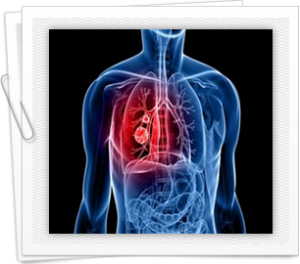Online CPR Certification Blog
Common symptoms of small cell lung cancer
Date: June 23rd, 2014
 Facts about small cell lung cancer
Facts about small cell lung cancer
Lung cancer is known to be the leading cause of deaths related to cancer in both men and women, especially in countries like China, United States and Canada. Any part of your lung is vulnerable to attacks by this cancer and it exists in two major types. There is the small cell lung cancer and the non small cell lung cancer.According to statistics, between 10 and 15 percent of people diagnosed with lung cancer have small cell lung cancer. There are a number of ways in which small cell lung cancer is different from the typical non small cell cancer of the lungs.
To start with, small cell lung cancer is characterized by a rapid growth and it also spreads much quickly. However, according to doctors, the response of small cell lung cancer to chemotherapy is much better where the medications are used for killing the cancer cells. Radiation therapy is also very effective in treatment of this kind of cancer as well. There is a great association between small cell lung cancer and distinct paraneoplastic syndromes. This refers to the name given to substances that the cancer tumor produces.
Causes of small cell lung cancer
Tobacco smoking is the main cause for non small cell lung cancer and small cell lung cancer but the later is linked to smoking tobacco more than the former. Secondhand tobacco smoking can also contribute to lung cancer and living with a smoker increases your rest of getting this cancer by between 20 and 30 percent. Most lung cancer cases are frequently reported among people working in uranium mines and small cell lung cancer isn’t an exception to this either. Smoking puts you at an even more grave danger. Radon exposure has also been reported to be a major cause for small cell lung cancer as well as well as being exposed to asbestos. The risk is even more when there is a combination of cigarette smoking and asbestos exposure.
Common small cell lung cancer symptoms
People diagnosed with the small cell lung cancer usually experience the symptoms for quite a short time, between 8 and 12 weeks before visiting a doctor. These symptoms mostly result from the local tumor growth spreading to the nearby areas and spread to distant parts. Common symptoms as such include normal coughing; coughing up blood, breathe shortness and chest pain, which becomes worse with deep breathing. When the cancer spreads to nearby areas, other symptoms are experienced like hoarse voice as a result of the nerve supplying the vocal codes being compressed, breathe shortness and swallowing difficulties as a result of the food pipe being compressed. Another common symptom swelling of face and hands and when you experience such symptoms, it is essential that you seek medical attention immediately.
